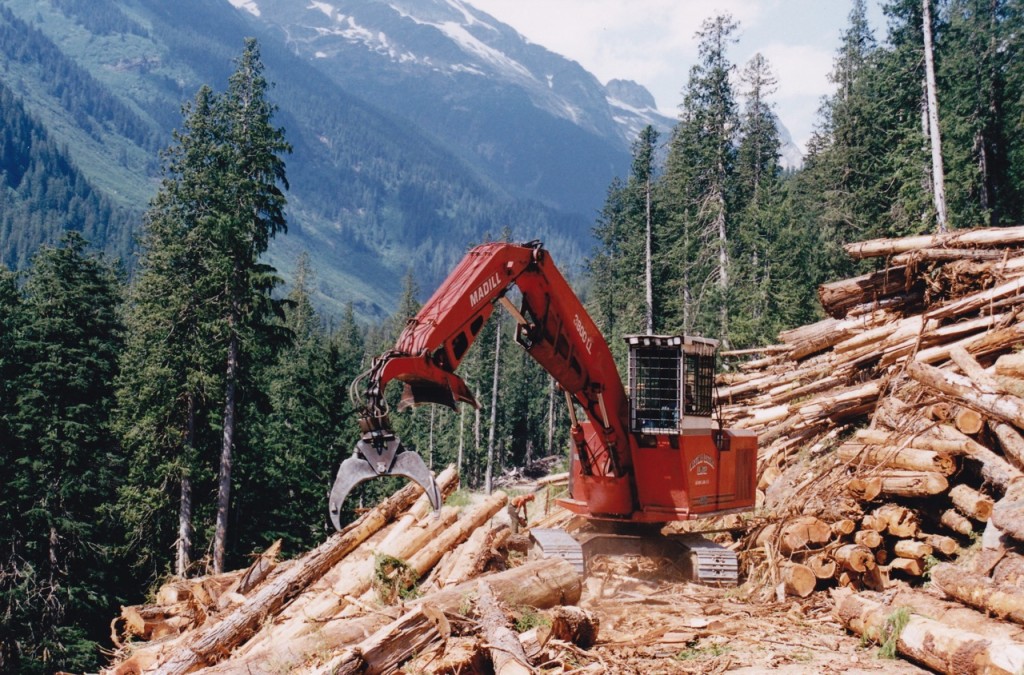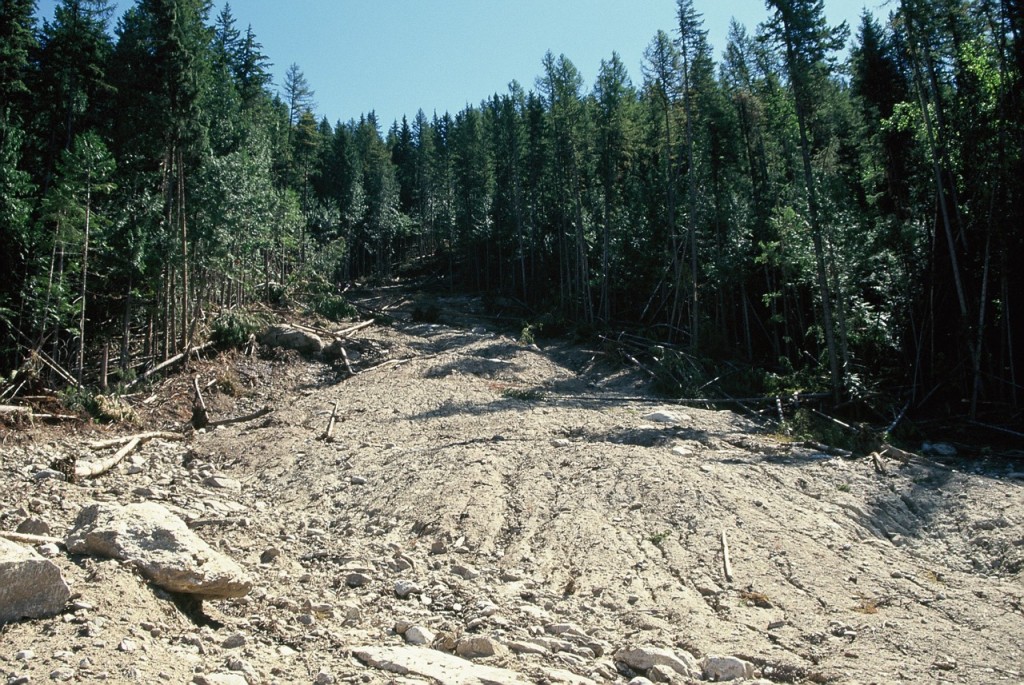There is an important public consultation underway about our region’s forests that few people know about and even fewer people will participate in and for those that do, it is unlikely their input will make any difference to the decision. At stake is the amount of timber that forest companies will be able to log over the next ten years in the Okanagan Timber Supply Area (TSA), which includes most of the Shuswap watershed.
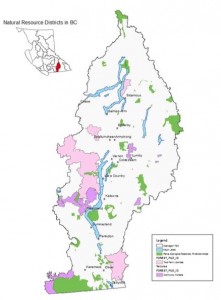 The data package prepared for the current review focuses on determining the area of forest available for logging, by netting out the hectares needed to support non-timber values such as wildlife, water, biodiversity and visual quality. Stretching from the border to the glacier that feeds the Seymour River, the TSA covers a total of 2.45 million hectares. Portions of the Shuswap that fall outside of the TSA include the Adams River sub-drainage and the upper Salmon River drainage.
The data package prepared for the current review focuses on determining the area of forest available for logging, by netting out the hectares needed to support non-timber values such as wildlife, water, biodiversity and visual quality. Stretching from the border to the glacier that feeds the Seymour River, the TSA covers a total of 2.45 million hectares. Portions of the Shuswap that fall outside of the TSA include the Adams River sub-drainage and the upper Salmon River drainage.
Once all the non-forested, and private lands are subtracted and the forests that are either inoperable, have poor quality timber, located in parks and protected areas or have environmental restraints, approximately 800,000 hectares remain in the timber harvesting land base (THLB). Also excluded is the forestland in Tree Farm Licenses, as the cut level for these areas are determined through a different process.
 Fortunately, the Okanagan Shuswap Land and Resource Management Plan, which was completed in 2001, provides the lines on the map that restrict or prevent logging to protect non-timber values. Specific zones protect habitat for grizzly bears, mountain caribou, bighorn sheep and other wildlife. However, Illustration by by Irene MacLennan there is a need for monitoring to determine how well the plan is protecting non-timber values and the results should be used to improve the plan, which may show the need for additional logging restrictions.
Fortunately, the Okanagan Shuswap Land and Resource Management Plan, which was completed in 2001, provides the lines on the map that restrict or prevent logging to protect non-timber values. Specific zones protect habitat for grizzly bears, mountain caribou, bighorn sheep and other wildlife. However, Illustration by by Irene MacLennan there is a need for monitoring to determine how well the plan is protecting non-timber values and the results should be used to improve the plan, which may show the need for additional logging restrictions.
Massive slide in 1998 above Swansea Point
Given the number of landslides just last year in the Shuswap, a major concern for some rural homeowners would be the number of hectares of unstable and potentially unstable land that is deducted from the THLB. The data package shows that only 20 percent of the potentially unstable land is off limits to logging, that is why Tolko has the right to proceed with its plans to log on the steep hillsides above Swansea Point at Mara Lake, where there already have been two massive slides.

Some of the key information that is missing from the data package includes the amount of mature timber remaining to be logged and the number of years left before the second growth can be harvested. The data package focuses on hectares of land excluded from logging, while the goal is to determine how many cubic-metres of timber can be logged every year. There is no estimate of the amount of timber that is logged per hectare, which varies with the size of the trees. Given that the trend has always been to log the best timber first, what timber remains is likely inferior and yet there is no consideration for this steady decline in the quality and volume of the remaining mature timber.
Another key factor in the cut level determination is how well the plantations are growing, as knowledge about the timing for when this second growth will be ready to log and what volume would be expected is required to ensure forestry is sustainable. The ministry uses extrapolation data obtained from sample plots to estimate future tree growth, which only provides an estimate. Actual inventory data is woefully inadequate, as funding for this work has been insufficient for over a decade.
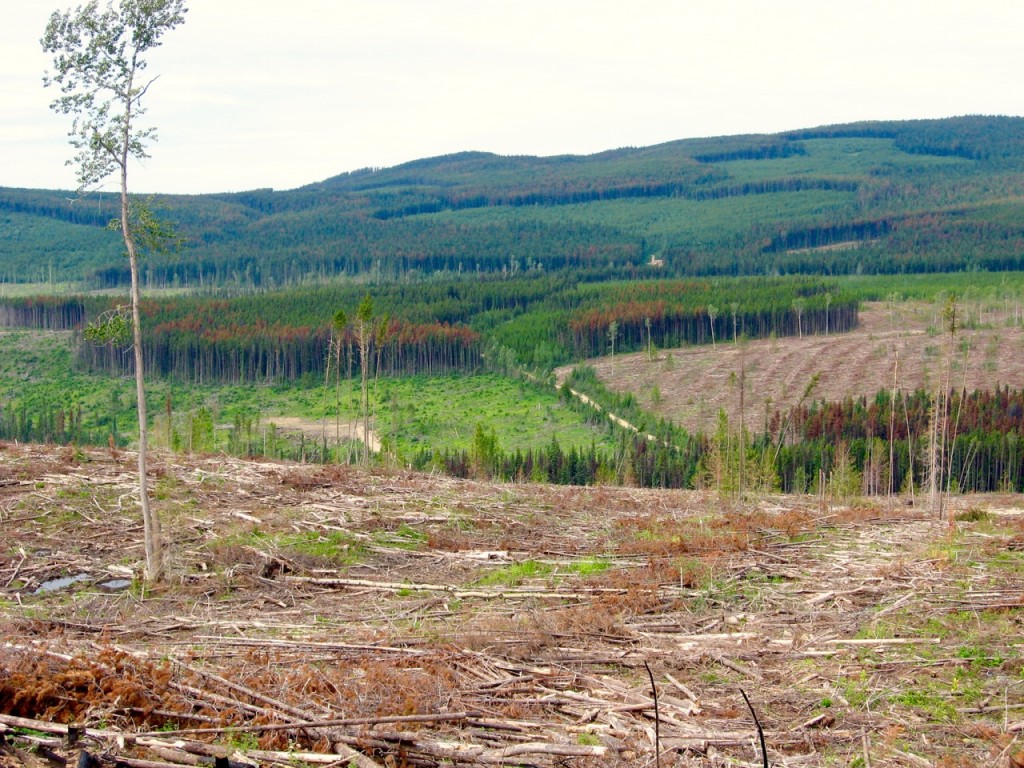
Large swaths of forest, including plantations were killed by pine beetles
One important issue that is missing in the data package is the impact of climate change, which has the potential to negatively impact the health of the plantations and the remaining mature forests. Increasing summer temperatures along with longer periods of drought increase the chances for more wildfires and more diseases and pest outbreaks. The uncertainties from climate change should be incorporated into the timber supply review.
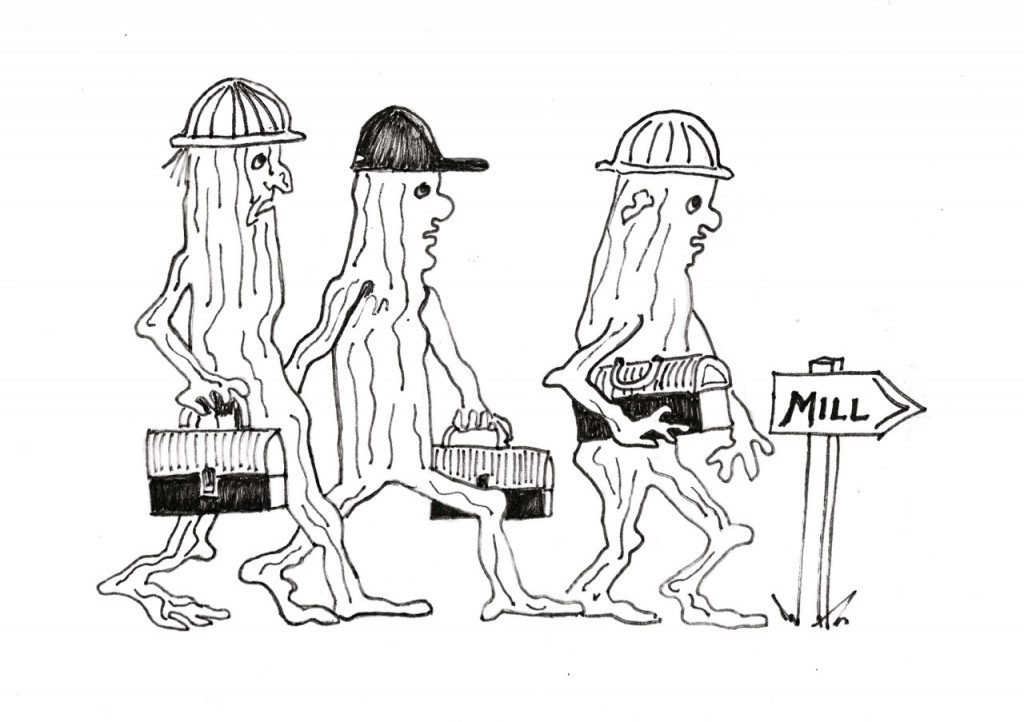 The “working forest” by Irene MacLennan
The “working forest” by Irene MacLennan
The rationale for maintaining high rates of logging has always been to protect forestry jobs, despite the fact that our region’s economy has been steadily diversifying and the number of jobs in forestry has been steadily decreasing due to a combination of automation and the growing decline in timber volume and quality. Given the number of jobs being created now in adventure tourism and the increase in damage caused by logging on steep slopes, it would be prudent to focus more on non-timber values when making the decision on how many trees will be logged in the future.
POSTSCRIPT
In the 1990s, I participated in a number of these reviews by providing detailed reasons why the cut levels should be reduced and of course this input fell on deaf ears, as these reviews are more about going through the motions of public consultation rather than seriously considering public concerns.
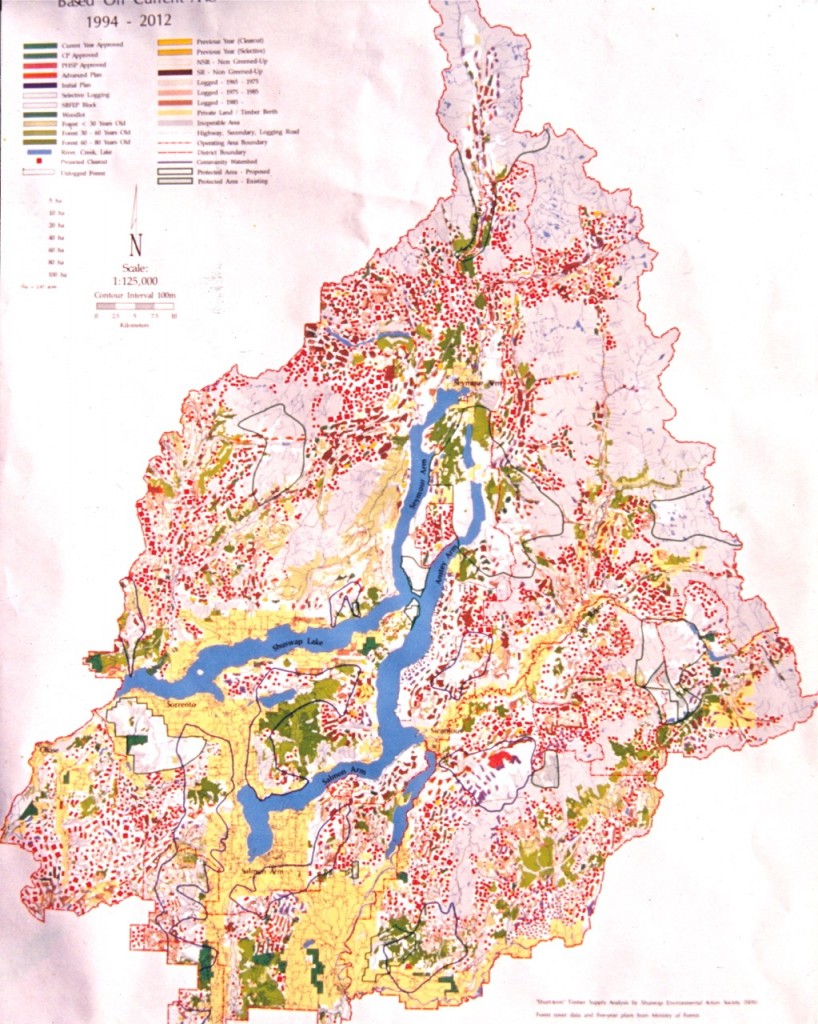 One of the projects we took on in the mid-90s was to undertake a spatial timber supply analysis (see map above). We determine the number of hectares logged each year in the Shuswap Forest District and then used red blocks to illustrate how much land would be logged by 2012. The resulting map showed very little unlogged forestland left. We are now one year past our projection. What has changed? – Only one large sawmill is left and the Shuswap’s major forest licensee (Federated Co-op) has been sold and the company that has purchased it (Gorman Brothers) only operated one mill – a plywood plant. A forester who is a friend, examined Fed-Co’s timber land and determine that very little was left and thus he advised another company not to purchase it. Few logging jobs remain in the Shuswap;.
One of the projects we took on in the mid-90s was to undertake a spatial timber supply analysis (see map above). We determine the number of hectares logged each year in the Shuswap Forest District and then used red blocks to illustrate how much land would be logged by 2012. The resulting map showed very little unlogged forestland left. We are now one year past our projection. What has changed? – Only one large sawmill is left and the Shuswap’s major forest licensee (Federated Co-op) has been sold and the company that has purchased it (Gorman Brothers) only operated one mill – a plywood plant. A forester who is a friend, examined Fed-Co’s timber land and determine that very little was left and thus he advised another company not to purchase it. Few logging jobs remain in the Shuswap;.
Despite the obvious declining timber supply, there seems to be no interest in reducing the allowable cut level. Consequently, it is unlikely that there will be much timber left to log in another ten years. Greed always seems to trump common sense in resource management.
Here is the link to the Okanagan Timber Supply review – data package
